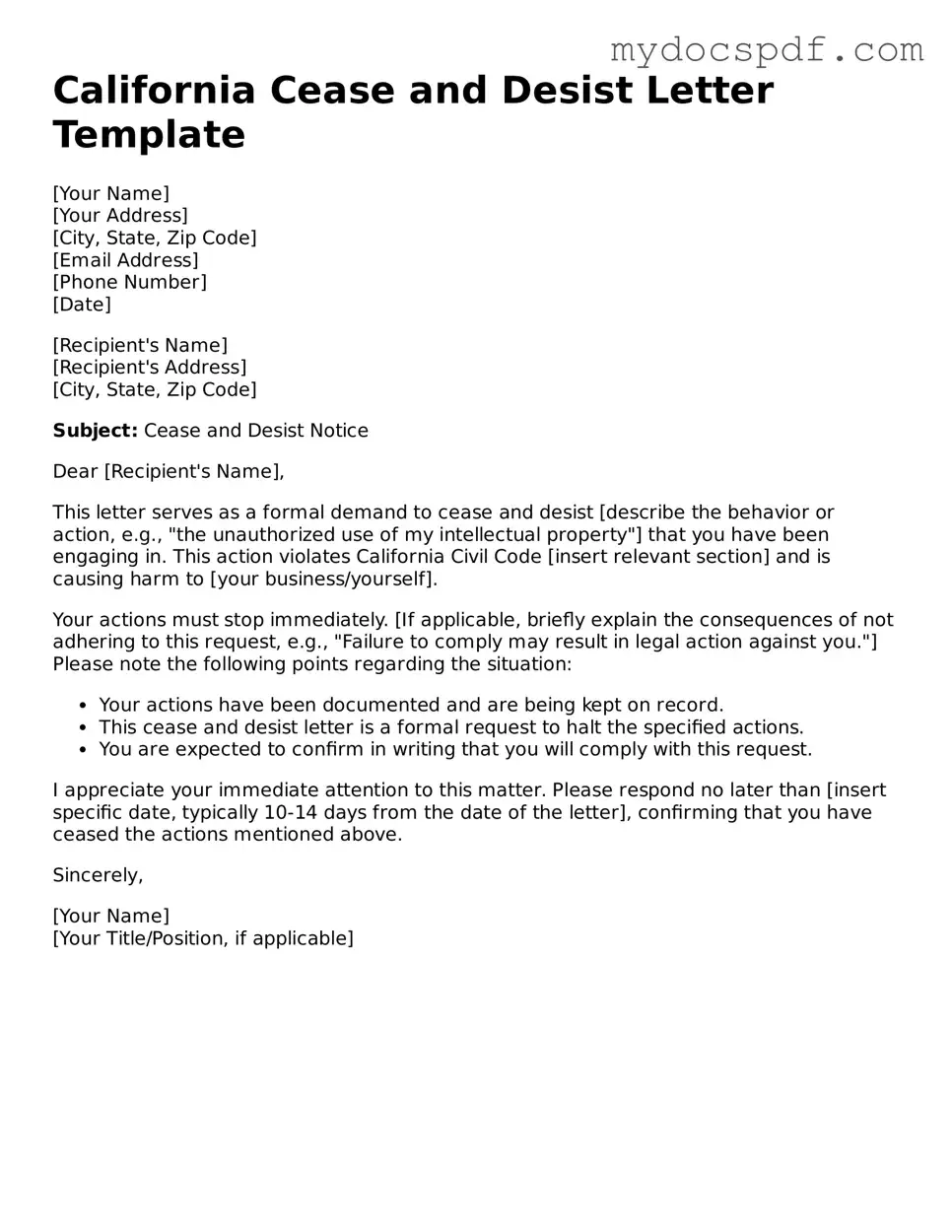California Cease and Desist Letter Template
[Your Name]
[Your Address]
[City, State, Zip Code]
[Email Address]
[Phone Number]
[Date]
[Recipient's Name]
[Recipient's Address]
[City, State, Zip Code]
Subject: Cease and Desist Notice
Dear [Recipient's Name],
This letter serves as a formal demand to cease and desist [describe the behavior or action, e.g., "the unauthorized use of my intellectual property"] that you have been engaging in. This action violates California Civil Code [insert relevant section] and is causing harm to [your business/yourself].
Your actions must stop immediately. [If applicable, briefly explain the consequences of not adhering to this request, e.g., "Failure to comply may result in legal action against you."] Please note the following points regarding the situation:
- Your actions have been documented and are being kept on record.
- This cease and desist letter is a formal request to halt the specified actions.
- You are expected to confirm in writing that you will comply with this request.
I appreciate your immediate attention to this matter. Please respond no later than [insert specific date, typically 10-14 days from the date of the letter], confirming that you have ceased the actions mentioned above.
Sincerely,
[Your Name]
[Your Title/Position, if applicable]
